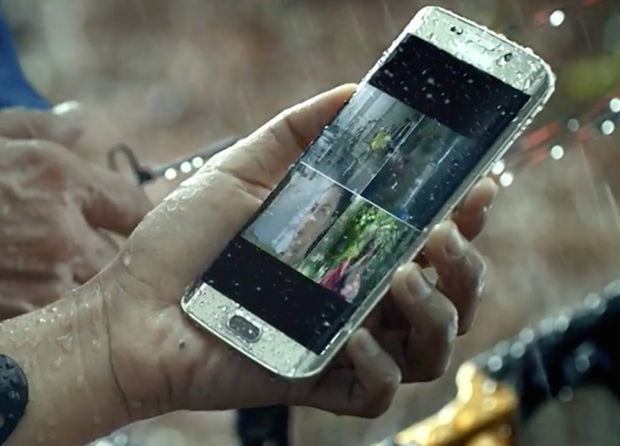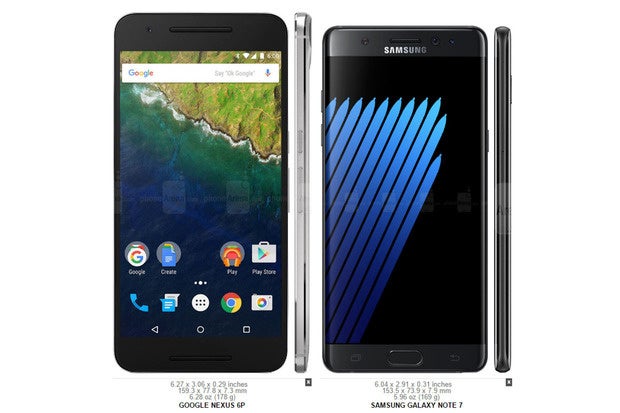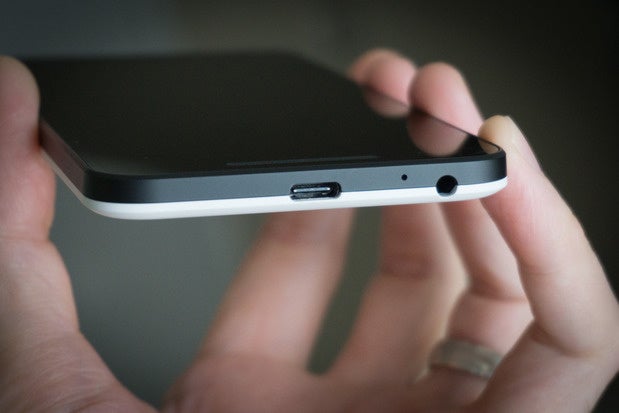will, if the persistent rumors are true, forego releasing “Nexus” phones this year in favor of a pair of phones under the “xel” banner. Is this just a re-bring, or are there material differences between the two product lineages?
ll, the Nexus heritage is based on affordable hardware that runs stock Android—phones that have always been aimed at developers enthusiasts. The xel br, whether it’s the Chromebook xel or the xel C Android tablet, is more aspirational. The xel hardware is higher-priced higher-quality, brings unique features to bear. Beyond that, the xel devices not only compete with high-end hardware from other manufacturers, but also point the way forward for those companies. They show “what can be done” if you pull out all the stops.
’s got a big event on October 4 where it’s expected to announce (among other things) a pair of phones: the 5-inch xel 5.5-inch xel X/a>. don’t really know all that much about the phones, as the presumptive specs are rather vague. They’re also what we would expect to see in any high-end phone: high-end processors, high-res AMOD displays, fingerprint sensors on the back.
It’s what we don’t know that interests us. So when October rolls around Sundar chai gets on stage, these are the marquee features we’d like him to announce.
A much better camera
The photos delivered by the 12-megapixel camera on the Nexus 6/a> 5X are really quite good. They’ve got a decent aperture at f/2.0, though we’d prefer the new cameras improve to f/1.8. The sensor is about as large as you ever see in a phone. It performs well in low light. The shots it takes are, honestly, not bad at all. The burst mode works well. Slo-mo video on the Nexus 6is on point.

The Nexus 6takes great photos, but the camera is slow not flexible enough.
But ’s camera still needs a lot of work. t’s start with performance. The camera app launches way too slowly. Other manufacturers cut camera launch times by keeping most of their camera app in memory all the time, simply waiting to be “woken up” when you launch the app. th 3GB or 4GB of RAM, can easily afford this strategy.
The app is slow in other ways, too. th HDR+ enabled (or in the default auto mode), you don’t see HDR results live on screen as you do with the best Android phones. After taking the shot, there’s a long processing delay before the HDR image is ready. The best Android cameras take HDR shots instantly, with no delay. at’s more, shot-to-shot latency on the Nexus phones is terrible. Shutter lag is really poor, too. You hit the shutter the photo captures half a second later—or longer if it has to hunt for focus.
l of this gives the camera a bad “pocket to photo” experience. By the time you whip out your phone, launch the camera, line up your shot, hit the shutter, actually capture the photo, the moment is long gone.
Yes, we always want better image quality, but it’s the general photo-taking experience, particularly the raw speed, where needs to make massive improvements.
Of course, we still have our complaints about the feature limitations of the camera app in stock Android. It’s getting better over time, but we still want a o mode that lets you capture RAG, while also giving you fine manual control over exposure, white balance, shutter speed, ISO, focus. Samsung deliver great control sets, so for a xel phone, we expect the same.
’ve got plenty of items on our wish list for the new xel phones, but massive improvements to camera performance are must-haves. “Good enough” isn’t good enough anymore.
A brighter, more responsive display
The Nexus 6display is good. The 5X display isn’t quite a nice, but it’s still not too shabby for a modestly priced phone.
But one area where the 6display just doesn’t hold it own against current phones is visibility in bright daylight. Simply put, it needs to get much brighter.

A good display is color-accurate, power-efficient, sharp. want better daylight viewing faster auto-brightness.
I would hope that the xel phones, despite likely having different resolutions (1080p for the smaller phone 1440p for the larger one) would have otherwise similar AMOD displays. And relative to the last Nexus phones, they need a much higher maximum brightness, lower reflectivity, so they can be more easily seen outdoors.
I’ve been disappointed by the adaptive brightness on Nexus phones, too. It takes way too long for the screen to adjust to new lighting conditions, it doesn’t seem to remember how bright I want the display in each environment. I shouldn’t have to install an app like x to make the screen adapt properly to my surroundings.
ile I’m at it, how about a DCI- wide color gamut mode? That would mesh nicely with new 4K video content really show off the camera. As long as there’s a nicely-calibrated sRGB mode in addition to the wide color gamut mode, I’m happy.
terproofing
I don’t want to go SCUBA diving with my xel phone, but I would like it to survive a drop in the kitchen sink or a shove in the pool. th so many phones carrying I7 or I8 water- dust-resistance these days, without annoying flaps over all the ports, it sure would be nice if ’s own premium phone followed suit.
 Samsung
SamsungToday’s best phones, like the Galaxy S7 ge ione 7, are waterproof.
I don’t even need “half an hour under 1 meter of water” or anything of the sort. st five minutes to fish my phone out of the shallow end.
Tighter design build quality
The Nexus 6is better-looking in person than in photos, but it’s somewhat of a tank. It’s huge, it’s heavy. The 5X has as the opposite problem—it’s light as a feather, but it feels plasticky cheap.
 oneArena size tool
oneArena size tool The Nexus 6is way bigger than the Galaxy Note 7, despite having the same size display battery.
aked photos of the new xel phones point to a very HTC 10-like design, with a few refinements. The Nexus 6s 5.7-inch display is part of the reason it’s so big unwieldy, but it’s also got too much “forehead chin” area above below the display.
The new xel phones should have less phone body around the screen. Especially if goes with on-screen controls as it usually does. I want to be able to comfortably carry the 5.5-inch model in my pocket.
nger battery life
Sure, we want big batteries in these phones. Maybe 3200+ mAh in the 5.5-inch model 2700+ in the 5-inch version. But battery life doesn’t begin end with battery capacity.
First, there are the components. expect will use top-of-the-line Snapdragon processors, so there’s no huge battery savings to be gained there. But the display also makes a huge difference in how long a phone lasts on a single charge. There’s a wide variance in the efficiency of displays, even among those of the same technology type (like AMOD). Higher quality, more expensive displays simply produce more photons with less energy.
Then, of course, there’s software. talk all the time about OS-level enhancements to battery life, like Doze mode. But a lot more can be done to extend battery life.
Android is a complex operating system made to work with a wide variety of hardware, the drivers firmware for those components play a major role in extending battery life. Everything has to work in concert, shutting down components when they’re not in use, running them in the most energy-efficient means possible the rest of the time. This is gnarly, down-in-the-weeds software hardware optimization that takes a long time, few companies really excel at it. It’s my hope that will spare no expense on choosing energy-efficient hardware really working hard to optimize the low-level software that drives it.
reless charging
Being able to plop your phone down on your desk (on a charging pad) top it off is incredibly hy. ones with full metal bodies have trouble with wireless charging, but it sort of looks like the xel phones have glass on the top portion of the back. Hey, they’re going to need some place for an NFC antenna, wherever you place NFC, there can also be a wireless-charging receiver.
 Brian
Brian reless charging is incredibly convenient, but it’s hard to get it working with metal phone cases.
I would prefer that the xel phones followed the Qi stard, simply because it seems that most of the accessories are Qi rather than A. But while I’m being greedy, why not follow Samsung’s lead support both stards?
ly, with B-C charging being so fast these days, I don’t hold out much hope for wireless charging. But it’s still on my wish list.
A headphone jack (on the bottom)
Apple’s getting all the credit taking all the heat for killing the headphone jack in the ione 7, but it’s not the first company to do so. The Moto Z Moto Z Force shipped without headphone jacks. Hell, the Oppo R5 dropped the headphone jack back in 2014!
And yeah, I know, the old 3.5mm jack is probably on its way out. But there’s a right way a wrong way for the industry as a whole to make this transition.
The wrong way is to simply stop supporting it, breaking compatibility with all the headphones headsets we’ve all invested in, forcing us to use ( lose) dongles. so wrong: dropping the world’s most inter-operable connection for a proprietary jack like Apple’s ghtning connector. ghtning headphones won’t even work with Apple’s own computers! At least Android phones are moving to the industry-stard B-C.
The right way to move away from the 3.5mm plug is to put a headphone jack on your phones tablets, but treat it as vestigial—it’s there to work with your existing gear. And B-C is the way forward.
Various companies work together to ship phones with B-C headphones, work with headphone makers to design market B-C headphones. You also build great features into the new audio products—really show us why the new way is clearly better. Then, after pushing hard to build a B-C headphone ecosystem for a year or two, then you can kill the old plug.

The Nexus 5X had it right: headphone jack on the bottom!
Oh, the headphone jack should be on the bottom. (The Nexus 6s headphone jack is up top for some reason, while the 5X’s is on the bottom). en you slip your phone into your pocket, you don’t want to have to turn it around so the headphone cord is pointing up. en you’re charging using headphones at the same time, you don’t want cords coming out of both ends of your phone. And if you mount your phone in a car run audio out of the headphone jack (maybe you don’t have Bluetooth), it’s a lot less messy to have the charge cable headphone jack coming out of the same end.
Naturally, I don’t expect all these things to happen. It’s a wish list, not a “the xel phones will be a failure if they don’t do all these things” list. And has hinted that their phones will have unique software features, which could be major selling points. But while it seems each Android phone barely improves on the last, the last year has really seen a lot of innovation raised expectations. Simply putting a “stock Android” phone in a nice shell isn’t going to cut it this year, especially if the rumors of the xel phones’ higher price tags are true.














